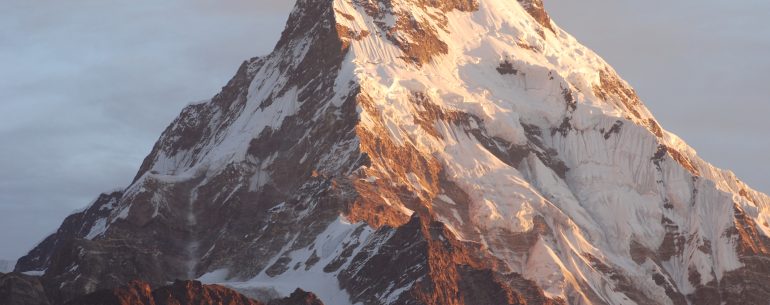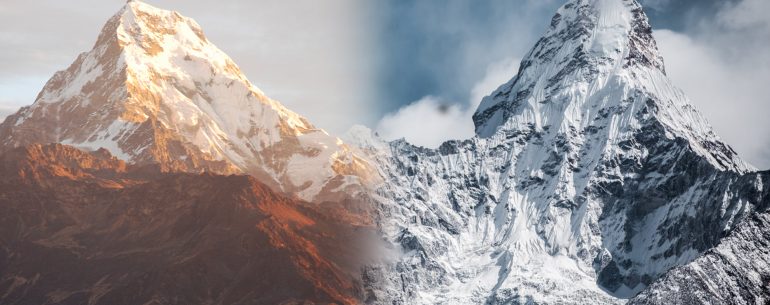Nepal’s historic towns and cities are atmospheric bases for tea-house treks amongst the snow-capped Himalayas: add lowland jungle wildlife and you have it all.
For decades Nepal stood proud as the worlds top trekking and mountaineering destination. Then came the Maoist rebellion – and tourists deserted in droves. Since the 2006 peace settlement ended ten years of violence Nepal is now firmly back on the travel agenda.
Kathmandu, the capital, is a very livable city, with pagodas dominating open squares and narrow alleys hemmed in by wooden buildings and fretwork screens. The restaurants are amongst the best in Asia and the city is always thronged with travelers. Treks from here tend to reach up the Kathmandu Valley, integrating dramatic views with constant interaction with the local inhabitants who share the same trails.
Pokhara, Nepal’s second city six hours by bus (or a short flight) to the west of Kathmandu, is an alternative base for planning your trek. Set by a lake it is at the heart of hundreds of trekking routes, some great day-treks and overnight hikes.
Sagamartha (the Nepalese name for Everest), is the major draw, but there are countless trails to choose from, threading through green foothills and past creaking glaciers, snow-cloaked peaks and high-altitude deserts.
The adventurous sort doesn’t just have to stick to trekking. Nepal is also one of the world’s premier rafting destinations, with a broad sweep of rapids from Grade I to Grade VI, as well as being the home of parahawking – paragliding guided by trained hawks and eagles.
Spiritually-inclined travelers can rub shoulders with Buddhist monks and Hindu ascetics in Nepal’s medieval towns, each with their own temples, always busy with locals making their devotions. Nature fans should also head south to the Royal Chitwan National Park, to comb the grasslands and forests in search of rhino and tiger.
Cold Feet Adventure Recommended:
Trek the Annapurna Circuit: This classic 21-day epic will give you a true taste of the Himalaya’s beauty – and scale Raft Whitewaters. Spring sees melt water power down from the Himalayas, and there are countless raft able stretches. From Kathmandu the most accessible is the Trisuli River.
Howdah Safari: The Royal Chitwan National Park is home to Nepal’s largest population of one-horned rhino and Royal Bengal tiger. Saddle up an elephant for great views of the grasslands and forest Time for a Temple. A rickshaw ride from Kathmandu, the two temple-packed towns of Patan and Baktapur are small-scale versions of the capital’s city centre as it was before the arrival of tourists: quiet and blissfully sleepy.
Conquer Everest: Perhaps not. Even though summiteers range in age from 16 to 64 not all make it back. But reaching base camp is itself a noble aim. Fly into Lukla and allow 15 days.
Find Your Own Trek: There are good maps of established routes and plenty of teahouses along the path. Most trekkers don’t need a guide or porter and there’s huge satisfaction in discovering the Himalayas on your own.
Wanderlust Tips:
Nepal has an excellent infrastructure for trekkers. Independent trekkers can hire porters, guides and pack animals in Kathmandu and Pokhara, as well as purchasing used trekking gear. You should ensure that your porters enjoy the same protection as other trekkers; the International Porter Protection Group provides useful guidelines for responsible trekking.Take water purification tablets with you instead of buying – and leaving behind – non-biodegradable water bottles. Bear in mind trekking permits are essential, and have to be paid for and booked in Pokhara or Kathmandu before you set off.









Leave a Reply